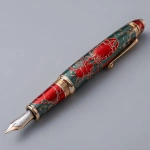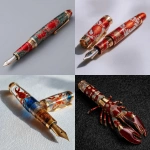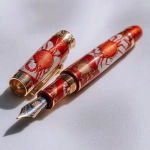Explore the Best AI Image Gallery

Fashioning the Future: How Wearable Tech Is Transforming Artistic Expression
The realm of creativity has always been driven by innovation, a constant exploration of new mediums and ways to express the human experience. Today, wearable technology stands at the forefront of this evolution, blurring the lines between art and technology in fascinating ways. From interactive installations to garments that respond to movement, wearable tech is empowering artists to create immersive and engaging experiences that transcend traditional boundaries.
Unleashing New Creative Frontiers
Wearable technology offers a vast array of tools for artists to experiment with. Sensors embedded in clothing or accessories can capture physiological data such as heart rate, body temperature, and even brainwaves, translating these signals into visual or auditory outputs. Imagine a dancer whose movements trigger a cascade of light patterns projected onto the stage, or a musician whose emotions influence the melody played by their instrument.
- Interactive Installations: Wearable tech can transform static installations into dynamic and participatory experiences. Visitors can don sensors to interact with sculptures or paintings, triggering changes in color, sound, or even the physical structure itself.
- Performance Art: Artists can use wearables to enhance their performances, incorporating real-time data into their movements, costumes, or props. This creates a captivating fusion of technology and human expression.
- Fashion as Art: Wearable tech is blurring the lines between fashion and art. Designers are creating garments that respond to light, sound, or even the wearers emotions, turning clothing into interactive canvases.
Ethical Considerations in the Age of Wearable Art
As with any powerful technology, wearable tech raises important ethical considerations for the creative industry.
- Data Privacy: Wearables collect vast amounts of personal data. Its crucial to ensure that this data is collected and used ethically, with transparent consent and robust security measures.
- Accessibility: The cost of wearable technology can create barriers for artists and audiences from diverse socioeconomic backgrounds. Efforts should be made to promote accessibility and inclusivity in the development and deployment of wearables in the creative realm.
- Authenticity and Ownership: The use of AI and algorithms in creative processes raises questions about authorship and originality. Its essential to establish clear guidelines and ethical frameworks for navigating these complex issues.
Future Trends Shaping the Wearable Art Landscape
The convergence of wearable tech and creativity is an ongoing evolution, with exciting advancements on the horizon:
- Immersive Storytelling: Wearables will enable more immersive and interactive storytelling experiences. Imagine donning a headset that transports you into a fictional world, allowing you to interact with characters and environments in real time.
- Personalized Art Experiences: AI-powered wearables could create personalized art experiences tailored to individual preferences and emotions.
- Augmented Reality (AR) for Creativity: AR overlays will enhance artistic expression by allowing artists to visualize their creations in 3D space, collaborate remotely, or project interactive artwork onto physical environments.
Wearable technology is not just a tool; its a catalyst for redefining the creative landscape. As artists continue to push boundaries and explore its potential, we can expect even more groundbreaking and transformative expressions of human ingenuity in the years to come.



